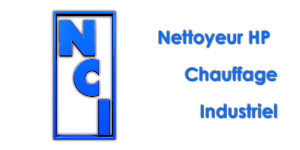Doras Software Program Supply Metrics: The 4 Keys
Their annual reports embrace key benchmarks, industry tendencies, and learnings that may assist teams improve. This measures how long it takes to have a change, ranging from when the developer works on all of it the way till it gets into manufacturing. This seems on the ratio between what number of instances you’ve deployed and how many occasions those deployments are unsuccessful.
Why Should Engineering Leaders Think About Dora Metrics?
MTTR is the average time it takes your staff to recuperate from an unhealthy scenario. Contextualizing the DORA metrics inside the broader organizational context can be essential. In an era the place software is at the heart of practically each enterprise, the power to ship high-quality software rapidly and reliably has turn out to be a strategic imperative. DORA metrics present actionable insights into growth processes, serving to groups reduce bottlenecks, enhance speed, and enhance system stability. These metrics function benchmarks for assessing how well DevOps practices are being carried out.
Deployment Frequency For Varied Performers: How Often Do You Deploy Code To Production?
Deployment frequency and lead time for changes measure throughput, while change failure price and failed deployment restoration time measure stability. In order to rely deployments that failed in manufacturing, you need to 4 dora metrics monitor deployment incidents. These may be logged in a simple spreadsheet, bug monitoring systems, a device like GitHub incidents, and so on. Wherever the incident data is saved, the necessary factor is to have each incident mapped to an ID of a deployment.
DORA metrics are most effective in measuring a team’s general software delivery efficiency as opposed to an individual—the metrics assist in evaluating a team’s present efficiency to its previous performance. By assessing a team’s ability to provide and ship work with stability, groups are higher equipped to judge their progress over time. This evaluation helps them identify areas for improvement and implement strategies to boost efficiency. Earlier Than starting any measurement initiative, it is very important clarify what it’s that teams are hoping to learn from the metrics and the way they’ll use them to enhance.
In addition, these metrics foster a tradition of steady improvement by offering clear, actionable insights into areas of improvement and operational performance. As a result, DORA metrics are indispensable for organizations striving for DevOps success. Change Failure RateChange Failure Price tracks the proportion of deployments that end in production failures, corresponding to bugs, downtime, or rollbacks. This metric is a critical measure of code quality and the reliability of a team’s launch processes. A lower Change Failure Rate signifies strong testing, higher improvement practices, and better system stability. Monitoring and lowering this fee permits groups to release options with higher confidence, knowing that they won’t compromise the customer experience.
- A change failure rate above 40% can point out poor testing procedures, which means groups will need to make extra changes than needed, eroding efficiency.
- This measures how lengthy it takes to have a change, ranging from when the developer works on it all the finest way till it gets into manufacturing.
- This enables teams to deploy a go-to motion plan for a direct response to a failure.
- Change lead times can influence recovery times, as a code change needs to maneuver via your deployment pipeline earlier than it could go reside.
- DevOps teams should concentrate on change failure fee instead of the number of failures.
- Organizations need a deep understanding of their developer experience to enhance engineering performance considerably and must actively develop essential capabilities via targeted initiatives.
Utilizing that story to make adjustments https://www.globalcloudteam.com/ that may improve their work setting is the key to fostering and supporting productive builders. Some objectives may be to higher understand bottlenecks, cut back burnout or improve deployment frequency. This understanding is important as it will lead to the proper strategy and level to related metrics. Deployment Frequency measures how often new software program versions are deployed to manufacturing. High-performing teams deploy multiple times a day, whereas lower-performing groups deploy weekly or even month-to-month.
The key end result of DORA’s analysis is the identification of four specific metrics, often recognized as the DORA metrics, which are broadly used to measure software program delivery efficiency in the industry. The aim behind measuring change failure rate is to automate more DevOps processes. Elevated automation means launched software that’s extra consistent and dependable and extra doubtless to be successful in production. Teams with shorter lead occasions have a tendency to fix faults rapidly because a decision within the code won’t get caught in an extended deployment pipeline.

Each of those metrics is calculated to offer insights into the team’s supply velocity, stability, and responsiveness. Where integrating these techniques requires too much effort, you can split a metric into manageable elements. The one factor that’s worse than a group attempting to enhance without metrics is one that’s pushed by metric-based targets. When you implement DORA metrics, you have to ensure you keep the work system wholesome. The metrics ought to information improvement efforts somewhat than drive team performance.
AI brokers assist your teams move sooner and work smarter, however only if you understand what you’re coping with. Get real-time insights and automation for complete web developer, seamless monitoring with agentless structure. Rapid developments in AI, No-Code/Low-Code, and SEI platforms are outpaced only by the evolving expectations they face. Learn how engineering leaders can take actionable steps to handle new technology challenges.
Lastly, Imply Time to Recovery (MTTR) is the fourth DORA metric, which measures the typical time it takes a company to recover from a service disruption or unplanned outage. A shorter MTTR displays a company’s capacity to rapidly establish, diagnose, and resolve issues, minimizing the impression of incidents on prospects and business operations. Worth stream management is a process for optimizing the circulate of worth via an organization. DORA metrics can be utilized to determine bottlenecks and inefficiencies in the software program supply process. DORA metrics can be used to determine areas for enchancment in the software supply process.

Dora Metrics Defined: The Four Dora Metrics And How To Improve Them
On the other hand, a longer lead time might imply delays and inefficiencies that hinder delivery efficiency. Change failure rate measures the percentage of deployments that end in a failure in production that requires a bug repair or roll-back. Octopus Deploy’s Insights characteristic is based on the DORA metrics and in addition consists of deployment length statistics.
For elite groups, this seems like with the flexibility to recover in under an hour, whereas for lots of teams, this is more prone to be under a day. Furthermore, DORA metrics should be complemented by qualitative suggestions and insights from teams and stakeholders. This holistic approach ensures that the metrics are interpreted throughout the applicable context, taking into account elements such as team dynamics, process maturity, and organizational culture. Begin tracking the metrics over time and establish areas where you can improve. Govt buy-in is crucial for the successful implementation of any new initiative, including tracking DORA metrics. Lead time for modifications measures the period of time it takes for committed code to get into production.
Posted in: Software development
Leave a Comment (0) →